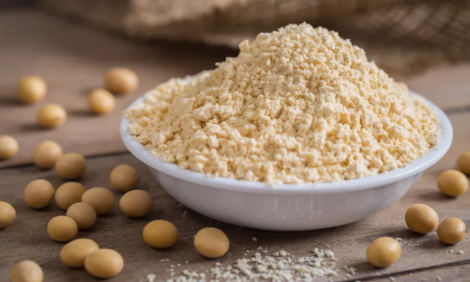



High Fibre Diets Offer Reduced Costs, Health Benefits
CANADA - A researcher with the Prairie Swine Centre says, by using strategies to improve the digestibility of fibre, pork producers can mitigate the negative aspects of ration formulations containing high levels of fibre while maximizing the beneficial effects, according to Bruce Cochrane.Factors driving the increased interest among pork producers in feeding fibre rich diets include the prebiotic effects of fibre in boosting gut heath helping to reduce the pork industry's dependence on the use of antibiotics and the lower cost of high fibre feed ingredients.
Dr Atta Agyekum, a Post Doctoral Fellow with the Prairie Swine Centre, says, when it comes to the inclusion of fibre in the diets of pigs, pork producers should not just be focusing on the negative aspects.
Dr Atta Agyekum-Prairie Swine Centre
The main problem with increasing the fibre content in the swine diet is that it will actually reduce the nutrients that will be available for the animal to grow so then the animal won't grow as fast as the producer wants them to achieve the target market weight.
Some producers are using DDGS or the DDGs.
These DDGs actually help to reduce the feed costs because they're not so expensive and there's less competition for them compared to, say, corn or wheat.
Some are also getting their fibre sources from oat hulls.
If you want to get the beneficial effects of the fibre, you need fibre which is soluble or which can be fermented by the pigs.
That is how you'll be able to see any beneficial effects.
With these DDGs and the oat hulls, you can actually add some enzymes to them, they can break down the fibre and they can improve the solubility of these DDGs and then you can see some of the beneficial effects such as trying to improve the gut health of the animal.
Dr Agyekum says pork producers have several options for improving the digestibility of fibre including the use of enzymes such Xylanase or Beta-Glucanase or physical methods such as pressure cooking or steam extrusion.






